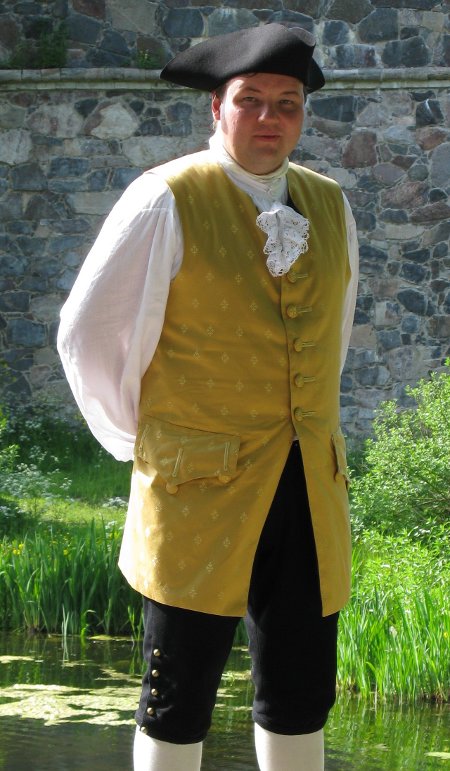
Waistcoat,
2009
The waistcoat of the mid 18th century suit for Jarno.
The suit project began with the breeches. Those being almost finished I turned my attention to the waistcoat. Originally I had planned the whole suit to be of the same black woollen material, but at this point Jarno, whom I had imagined to like a simple, masculine black suit, asked whether it was going to be all black without anything colorful? It's true what they say, even after years together you won't be able to read your partner's mind. Or imagine him listening what you explain... though with my sewing rants, who can blame him? Anyway, I suppose I will eventually find some use for the extra black wool, as there was probably too much of it in the first place (I usually buy too much just in case), and now I can ruin a cuff or two without running out of material.
So I was off for the fabric hunt again. I was originally planned to go period and use only wool and linen, but now I could not find any wool suitable for the waistcoat, and considered silk not only too expensive but also hard to clean - and heavier silks aren't to be found easily anyway. But I did find a very pretty, stiff viscose that we both liked. For the back and the lining I used thin black linen.
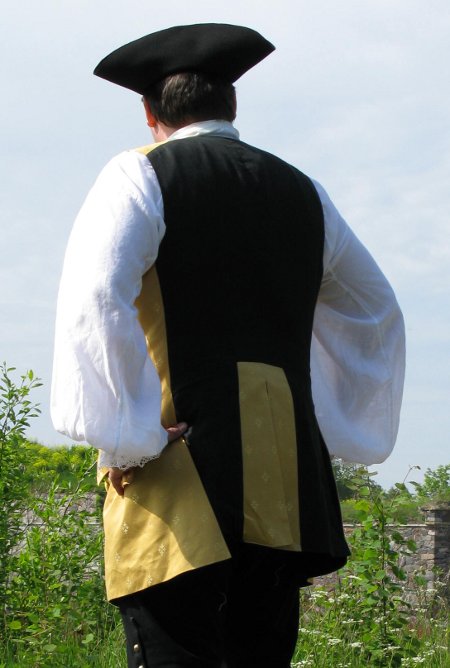
The pattern is based on the modern waistcoat pattern I made for Jarno at school. I updated the measurements and then spent a long time turning it into a 18th century waistcoat. My research sources included paintings, well costumed films, the priceless La Couturiere Parisienne, the Helsinki Town Infantry uniform patter used by The Olde Militia Of Helsinki, and Norah Waugh's "The Cut of Men's Clothes 1600-1900" (of which I'm ashamed to confess owning a pirate pdf file - I placate my conscience with the fact that I have bought the Women's clothes version). The challenging part in the pattern drawing was not only that I know next to nothing about men's clothes pattern-wise, but also all my sources were several sizes too small, so I had to figure out the proportions - especially lengthwise it was a bit tricky, and I'm still not sure if I got everything right. I made several mock ups to test the cut and fit.
I did consider making the back laced as was often the authentic way (though you seldom see it in films), but perhaps just out of laziness I didn't do it after all. If Jarno's measurements change too much I'll think of some other way to enlarge the waistcoat, and I can always take it in pretty easily. The truth is, I put it together in a hurry to get it finished in time for the 18th century weekend in Suomenlinna, since I didn't begin early enough.
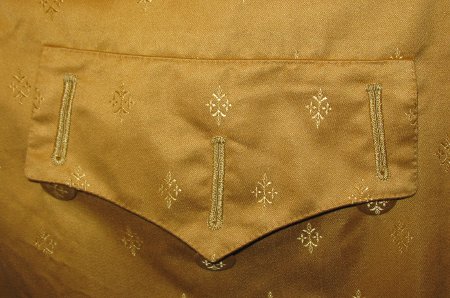
I begun by making the pocket flaps and embroidering the buttonholes. Having already abandoned the plan to stick to period materials I had the luck to find a shiny crocheting thread that matched the color of the fabric pattern perfectly, again in viscose. As it was thicker (and cheaper, too) than silken buttonhole thread I finished the buttonholes much faster than I had thought. The one downside was that it sometimes kept twisting most annoyingly, which also contributed to my decicion not to use real buttonhole twist stiches this time, but the plainer version. I don't know how strong the buttonholes will be, but part of them are only decorative, and if the thread will wear out some day I have plenty of it to replace them if necessary.
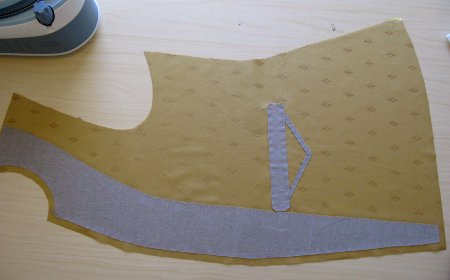
After finishing the pocket flaps I cut rest of the pieces. This was the first time I used hand-fastened interlacing, stiff linen instead of iron-on one, and I had some doubts about how it would work and perhaps show on the outside, but to my surprise it seemed to work very well and not show. At the front edges the hand stiching over the edge fastens it.
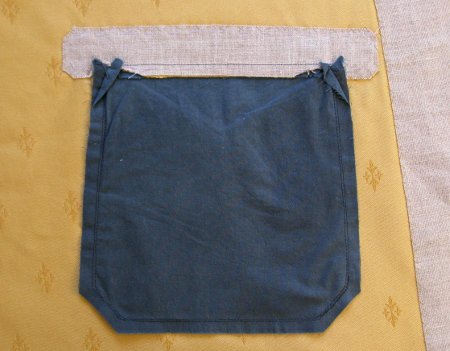
I made the pocket bags and inserted them along the basted lines, and handstitched the pocket opening all around. I had left the upper edges of the pocket flaps open, and now I sewed them on their place, exept the lining. Then I turned the seam allowance down under the lining, and sew the lining to the seam allowance.
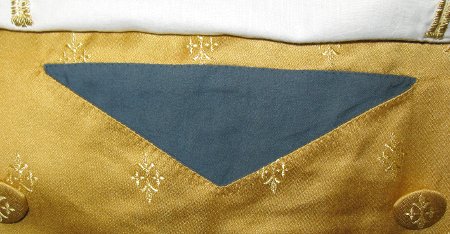
As I had been happy with my final mock up, and as there was not too much time to fuss with it, I for once put the rest of the waistcoat together without interruptions and without a single fitting. Everything is happily bag lined in a most period uncorrect way. Luckily it ended up fitting very nicely.
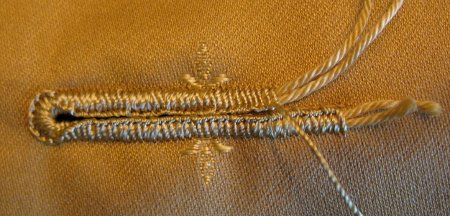
Then it was time to sit down with a needle again. I reinforced the back- and side slits, and stiched the front edges, leaving the rest of the edges for a less busy moment. Then I made the front buttonholes. The two top ones are just decorative, but the working ones I reinforced with sewing thread before finishing them with the thicker thread.
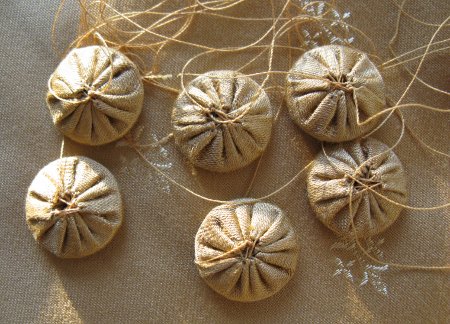
The last thing left now was to get the buttons. I wanted fabric covered ones, but realized that the ones you can order have a black plastic backing, not quite period, and what's the use of making your buttonholes by hand (even in viscose thread) if your buttons look modern? So, with none too much time left, I decided to try to make them myself. I had imagined covering buttons to be a lot more slow and tricky, for some reason, than it really was in the end, after a bit of experimenting and finding suitable buttons for the base. I carried the buttons and the pieces I had cut with me, and made the buttons during a few days at bus and on coffee breaks at work. How long they will hold remains to be seen, but like with the buttonholes, they are not too hard to replace.

The waistcoat was finished just in time, and moreover I'm quite happy with it. There are some small things, though, I still can't decide whether I should still add one buttonhole for example, but it will probably be settled by my never getting around to make it anyway. We also noticed that carrying anything of any weight in the pockets will cause too much strain on the fabric. It also seems that the lining is too large at the lower edge of the front piece, I thought to leave some space for the pocket bags and anything they might be filled with, but as it is, I have forbidden Jarno to use them anyway. So I might try to take some of it off later.
I still remain undecided whether the waistcoat is even a good attempt towards period correct or more a cliched and theatrical thing, but aesthetically I like it very much and Jarno is also pleased with it.